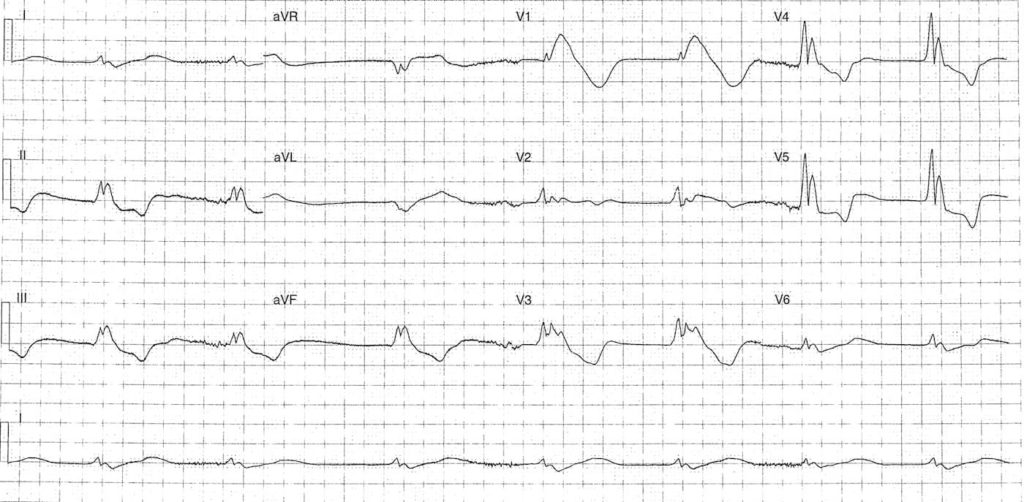ECG Case 088
44 year old male with a history of non-complaint Type 1 diabetes. He has been found at home in a semi-conscious state.
Describe and interpret this ECG
ECG ANSWER and INTERPRETATION
Rate:
- 42 bpm
Rhythm:
- Irregular
- Nil visible p waves
Axis:
- Normal
Intervals:
- QRS – Prolonged (200ms)
- QT – 760ms (QTc Bazett 640 ms)
Segments:
- ST Elevation lead aVR
- ST Depression leads II, III, aVF, V2-6
Additional:
- Deep T wave inversion leads II, III, aVF, V1, V3-5
- Osborn wave (J wave) best seen infero-lateral leads
- ST morphology in lead V1 has ‘Brugada‘ appearance
Interpretation:
Main differentials for these ECG features include
- Hyperkalaemia – known T1DM altered conscious level could be associated with DKA
- Metabolic disturbance – severe acidaemia
- Hypothermia – slow AF, J waves
- Drug toxicity – ? sodium channel blocker – ‘Brugada’ pattern in V1
OUTCOME
The patient was found obtunded and further history suggested a drug ingestion including a tricyclic antidepressant and paracetamol. He was severely hypothermic, core temp 25oC, with a significant metabolic disturbance:
- pH 6.9
- K 7.2
- HCO3 7
- U 10.6
- Creat 267
- Lactate 26
For the patient’s full set of clinical results see our lab case of the week here.
The patient was successfully resuscitated but unfortunately following his ICU admission he developed multi-organ failure and failed to respond to organ replacement and increasing vasopressor administration.
FURTHER READING
- ECG Library – Hypothermia
- ECG Library – Hyperkalaemia
- ECG Library – Osborn wave (J wave)
- ECG Library – Brugada Syndrome
TOP 100 ECG Series
Emergency Medicine Specialist MBChB FRCEM FACEM. Medical Education, Cardiology and Web Based Resources | @jjlarkin78 | LinkedIn |


I love the ecg case series, but i would never teach a junior college or student to recognize hypothermia via writing an ecg. I suggest a thermometer! But it is a great case.